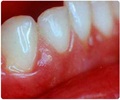Believe it or not, the bacterial diseases which are most commonly found in man are tooth decay and gum disease. These diseases have long plagued human mouths and are caused by changes in the tiny microbes present there. Now, recent studies have revealed the existence of yet another species of bacteria in the mouth.
Conducted at King's College London Dental Institute, the research’s results are of great importance because such a finding could enable scientists to understand tooth decay and gum disease better. This would also pave the way for new and improved treatments.To gain a better understanding of these diseases, scientists first need to know which bacteria are present in human mouths.
"The healthy human mouth is home to a tremendous variety of microbes including viruses, fungi, protozoa and bacteria," said Professor William Wade from King's College London Dental Institute.
"The bacteria are the most numerous: there are 100 million in every milliliter of saliva and more than 600 different species in the mouth. Around half of these have yet to be named and we are trying to describe and name the new species," he added.
While studying healthy tissue as well as tumors in the mouth, researchers found three strains of bacteria called Prevotella that could not be identified.
Prevotella species are part of the normal microbial flora in humans and are also associated with various oral diseases and infections in other parts of the body.
Advertisement
"Interestingly, this species was isolated from within the oral tissues, both in oral cancers and normal, healthy tissue. This confirms other work showing that oral bacteria can invade both tissues and individual cells," said Wade.
Advertisement
"A detailed description and name for each species of bacteria are needed so that different laboratories can recognize all of the bacterial species present in the mouth," said Wade.
The study is published in the August issue of the International Journal of Systematic and Evolutionary Microbiology.
Source-ANI
TAN/M









